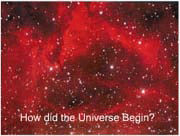Credit or debit. Check or money order. And don't forget about PayPal and Google Checkout. Since the late 1980s, the number of payment options has surged and American consumers have been quick to adopt them."There are all sorts of ways that just take cash out of the picture," said Bill Hardekopf, CEO of LowCards.com. "We really have been moving toward a cashless society."
All those changes mean that fewer and fewer dollars are being printed. Since 2000, annual printing totals have been among the lowest in three decades, according to the U.S. Bureau of Printing and Engraving. In 2010, production of $1 and $5 bills reached the lowest levels in the last 30 years.
The cashless trend will surely be augmented by the arrival of Isis, a digital wallet that will allow users to pay with a swipe of a smart phone. Earlier this month, Visa, MasterCard, American Express, and Discover all signed on to help create a "digital wallet." The system is scheduled to roll out in the first half of 2012.
Debit cards transactions ranked first in payments per month in the 2009 Survey of Consumer Payment Choice. Cash came in second and credit cards, third.
"Consumers are going to have to become more educated and more savvy about payment choices and navigating their way through the payment market," said Schuh. "Innovation often brings choice which is good, but it also brings more complexity and difficulty."
Tony Crisalli, who has run the Holmdel Village Exxon for 20 years, said he is seeing fewer and fewer cash transactions.
"Even for something as simple as a flat tire, people pay with a credit card," he said. Eighty to 90 percent of the gas Crisalli sells is purchased with credit cards. "Credit is king," he said.







